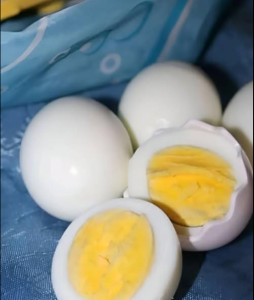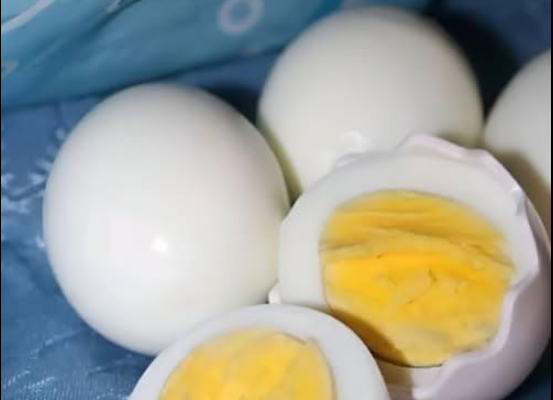
Why a Green Ring Appears Around Hard-Boiled Eggs — A 1000-Word Deep Dive
Hard-boiled eggs are one of the simplest foods in the world, yet they can occasionally surprise even the most seasoned home cooks. One of the most familiar—and sometimes puzzling—phenomena is the appearance of a greenish or gray-green ring around the yolk. It doesn’t look very appetizing, but it happens often enough that you’ve probably seen it at least once. The good news? It’s completely harmless. The better news? There’s solid science behind why it happens and simple ways to prevent it.
To truly understand the green ring, we need to explore what is happening inside the egg before, during, and after boiling. Eggs may look like simple objects—smooth shells, hidden interiors—but they’re chemically complex, and they react dramatically to heat. Let’s break it down step by step.
What Eggs Are Made Of
Inside every egg is a delicate balance of proteins, minerals, water, and gases. When you cook an egg, you’re essentially watching a chemical transformation in real time. The two main players in the green-ring mystery are:
-
Sulfur — found mostly in the egg white
-
Iron — present in the yolk
On their own, these minerals stay separated in their natural compartments. But when you apply heat—especially high heat for a long time—they start to interact.
The Chemistry Behind the Green Ring
When an egg is heated, the proteins in both the white and the yolk begin to denature, or unravel. This is what changes the egg white from clear and viscous to firm and opaque, and the yolk from soft to crumbly.
But deeper changes also happen.
1. Sulfur in the white decomposes under high heat
The egg white contains sulfur-rich amino acids. When overheated, these sulfur compounds break down and release hydrogen sulfide gas (H₂S). This gas naturally wants to go somewhere, and because the egg is enclosed, it travels inward toward the yolk.
2. Iron in the yolk meets the sulfur gas
The yolk is rich in iron. When the hydrogen sulfide gas reaches it, the two react chemically and form ferrous sulfide (FeS). This compound is greenish-gray in color, and it forms at the boundary where the white and yolk meet.
The result?
A thin but noticeable ring around the yolk—sometimes pale green, sometimes deep gray, depending on how much of the reaction occurred.
This isn’t mold, spoilage, or a sign of poor egg quality. It’s simply chemistry reacting to heat.
Overcooking: The Most Common Culprit
The green ring appears most often because the egg was cooked too long or at too high a temperature. Many people boil eggs vigorously for 10–15 minutes, assuming this ensures that the egg is fully cooked. But intense boiling encourages more hydrogen sulfide gas production and increases diffusion toward the yolk.
A hard rolling boil does two things wrong:
-
Heats the egg unevenly
-
Keeps the temperature too high for too long
Both of these push the sulfur–iron reaction to intensify.
Cooling Matters Too
Even if an egg is cooked properly, the green ring can still appear if it’s not cooled quickly. When the egg remains hot after cooking, the chemical reaction continues. That means the green ring can develop after the egg is out of the pot.
Rapid cooling—such as placing the eggs in an ice bath—halts the cooking process and minimizes or stops the formation of the green ring.
Are Green-Ringed Eggs Safe to Eat?
Absolutely. The green ring does not indicate spoilage, contamination, or any harmful chemical change. Ferrous sulfide is harmless in the quantities formed in eggs. The main difference is aesthetic—it may look unappealing, especially if you’re preparing deviled eggs—but it doesn’t affect safety.
It may slightly alter flavor, giving a mild sulfur smell or chalkier texture, but it’s not dangerous.
How to Prevent the Green Ring
Fortunately, preventing the green ring is simple and doesn’t require fancy equipment. Two principles matter most: gentle cooking and rapid cooling.
1. Use a gentler cooking method
Instead of boiling, try this method:
-
Place eggs in a pot.
-
Cover with cold water by about 1 inch.
-
Bring the water just to a boil.
-
As soon as it boils, turn off the heat.
-
Cover the pot and let the eggs sit:
-
9–12 minutes depending on egg size and desired firmness.
-
This method prevents overheating.
2. Cool the eggs immediately
After cooking:
-
Drain the hot water
-
Transfer eggs to an ice bath for at least 5 minutes
-
Or flush with cold running water until fully cooled
Cooling stops the hydrogen sulfide from continuing to react with the iron.
3. Use fresher eggs when possible
While freshness doesn’t directly affect the green ring, older eggs have slightly higher pH levels in the white, which can enhance the production of hydrogen sulfide during cooking. Fresh eggs are less prone to this reaction.
4. Avoid high heat
High heat is the enemy. A fast boil is more likely to create ferrous sulfide than a gentle cook.
Why It Happens More in Older or Commercial Eggs
Interestingly, eggs bought from grocery stores—often several weeks old—are more prone to this phenomenon than freshly farmed eggs. This is related to pH levels: as an egg ages, carbon dioxide escapes through the shell, increasing alkalinity. A more alkaline egg white breaks down sulfur compounds faster under heat, which increases hydrogen sulfide production.
But again, this is a cooking issue, not a food safety issue.
You’ll Also See It in Overcooked Scrambled Eggs
While the green ring is most commonly noticed around hard-boiled yolks, the same chemical reaction can occur when scrambled eggs are cooked too long or kept hot on a buffet line. In scrambled eggs, it may show up as a greenish tint across the surface. The cause is identical: sulfur meets iron under prolonged high heat.
Final Thoughts
The green ring around a hard-boiled egg is one of those kitchen mysteries that makes much more sense once you understand the chemistry happening beneath the shell. What looks like a strange discoloration is simply a harmless compound formed when sulfur from the egg white reacts with iron from the yolk—but only when the egg is overheated or not cooled quickly enough.
It’s not a sign of a bad egg, unsafe food, or poor nutrition. It’s merely a heat-induced reaction, and it’s easily prevented with gentler cooking and a quick chill.
So the next time you crack open a hard-boiled egg and discover that green halo, you’ll know you’re witnessing science at work. And with a slight tweak to your cooking method, you can eliminate the green ring entirely and enjoy perfectly yellow yolks every time.

